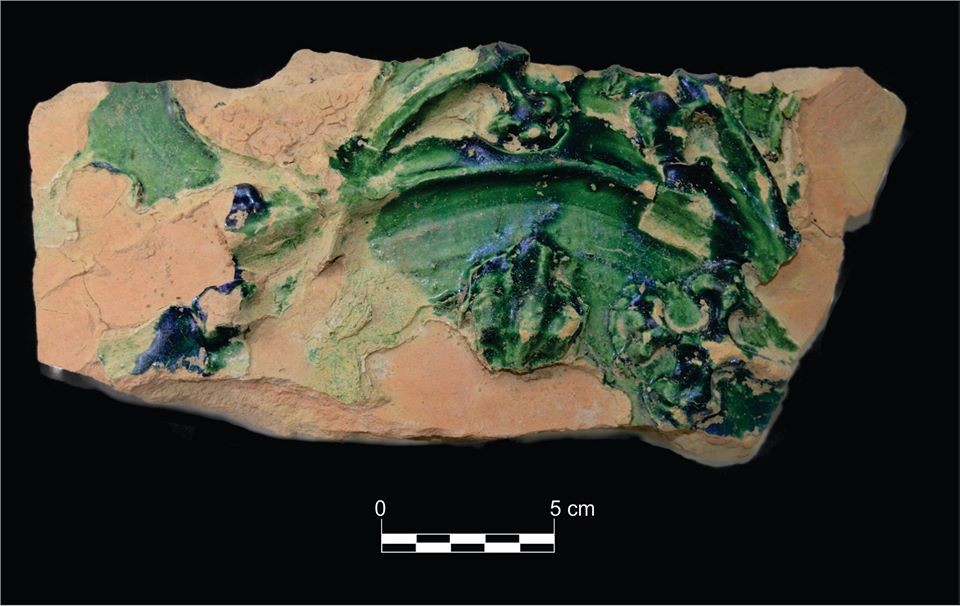A baptismal font fragment made in Triana (Seville)

A baptismal font fragment made in Triana (Seville)
This ceramic fragment was found in the archaeological excavations carried out by the Gibraltar National Museum in Main Street, in front of the Cathedral of St. Mary the Crowned in the 1990s. It was probably part of the first baptismal font of the church’s Gothic phase.
The green-glazed fragment has relief (carved) decoration, and a cross formed by floral motifs and garlands can be observed. The light yellow clay with pinkish tones with which it is made is characteristic of pottery factories in the area of Seville.
This type of font was produced during the 15th and 16th centuries, especially by Sevillian potters from Triana – a neighbourhood with a strong tradition of pottery-making since Islamic times (another production centre for baptismal fonts in Iberia was Toledo). Following the Castilian conquest of Seville in 1248, the Mudéjar workshops continued producing large quantities of ceramics, with the decorations gradually acquiring a Gothic character from the 14th to the first half of the 16th century.
Taking advantage of Seville’s inland port pieces like this were exported across the Iberian Peninsula as well as to the Canary Islands, Madeira and the American colonies. A change began to take place in the 17th century, when glazed clay baptismal fonts were being substituted by more noble and durable materials such as stone or marble. The use of clay fonts was finally banned in 1671 in order to enforce their substitution.
Published: June 26, 2020
Other similar VM - Archaeology
18-20 Bomb House Lane
PO Box 939,
Gibraltar
